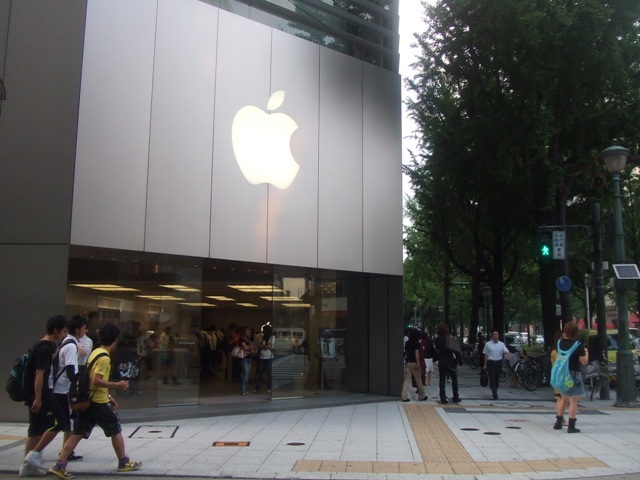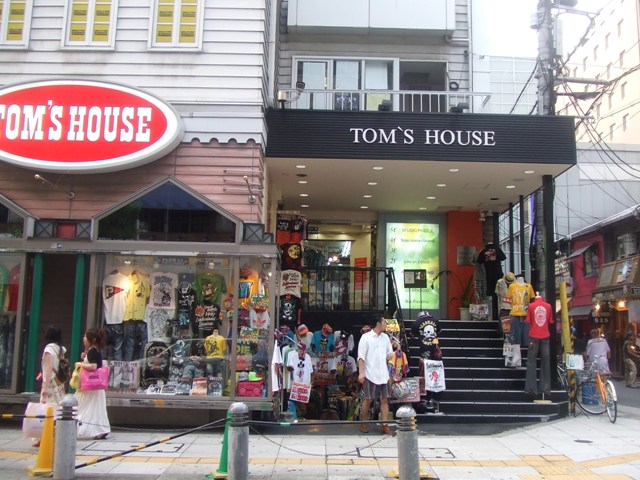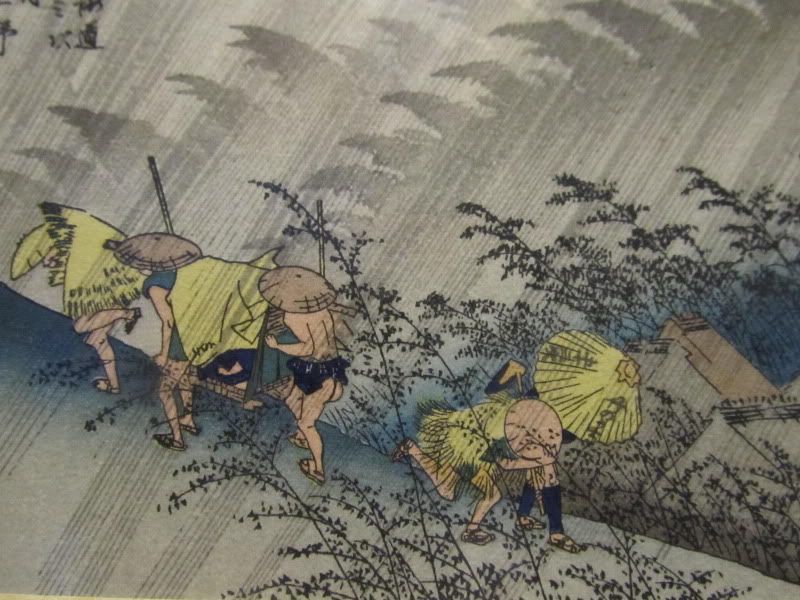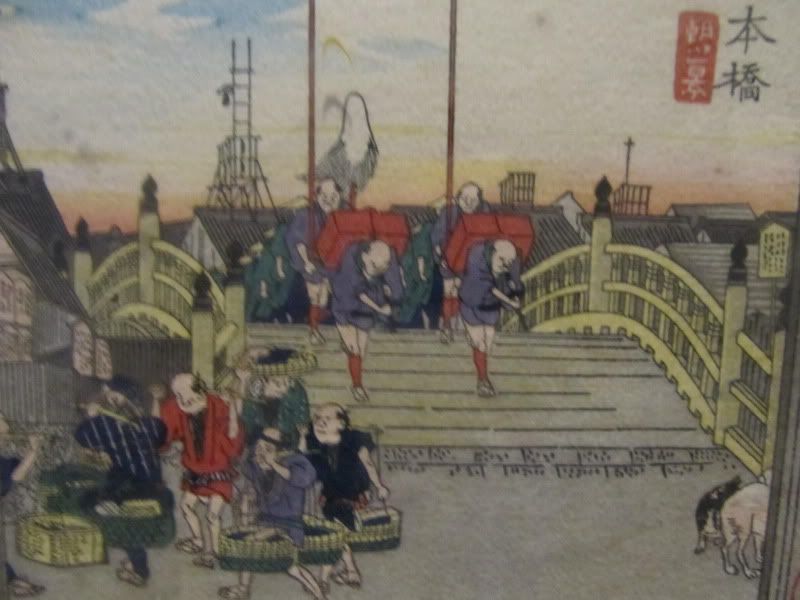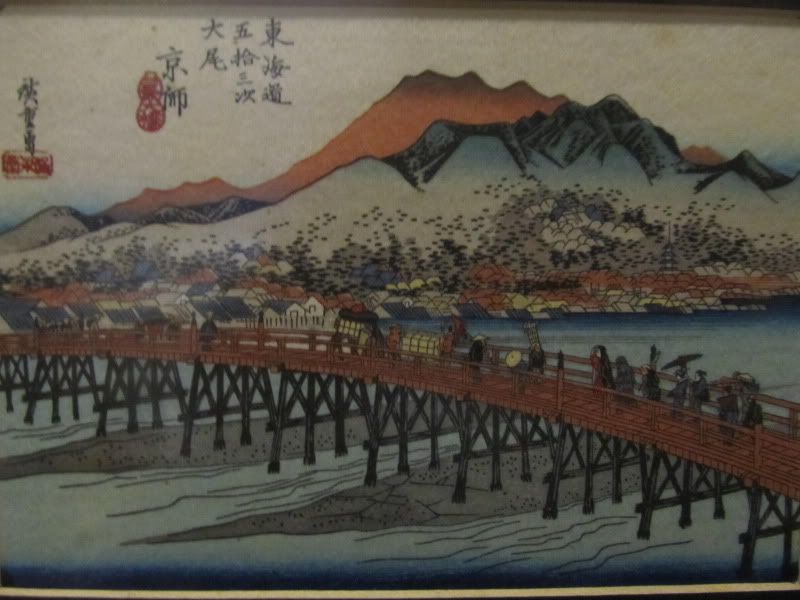 Ramen: Instant Fun Ramen: Instant Fun
 |
|
 |
Avenue99
|
|
I'm a stage producer. And interested in a for... more
|
|
|
Instant Fun
by Alan Wiren
 |
"Eternity": instant noodle art
|
"Hungry?!"
That and the name of the product were the only words in a clever series of
advertisements by Nissin, the internationally (and extraterrestrially) known
maker of instant noodles. The ads juxtaposed the ease and convenience of
preparing Cup Noodles with the difficulties of other, more traditional means of
finding sustenance -- hunting mammoth, for instance. If you have never been to
the Momofuku Ando Instant Ramen Museum, you may not realize that these ads
reflect the seminal origins of the company.
Just after World War II, before there ever was an instant noodle, the
Japanese people were hungry. Recovering from a lost war left the nation with
food shortages. Momofuku Ando, later to become founder of Nissin, was struck by
something he saw at that time: long lines stretching out in front of ramen
shops. It gave him the idea of making ramen available to people, in his words,
"anytime, anywhere."
It is easy, now, to take instant ramen for granted; indeed, the company's
very goal is to make instant noodles an integral part of people's lives.
But the invention of the instant noodle was no mean feat, as you can judge
from the displays at the museum. Just inside the doors you will find a glass
case filled with medals and letters of recognition, not only from Japanese
universities, but from culinary institutions as far away as Los Angeles and
Brazil, all commending Ando for having invented the instant noodle.
Step inside the main hall and the history of Ando and his company unfolds.
 |
Momofuku Ando
|
It begins with his epiphany outside the ramen shop, presented as a video.
(The video is in Japanese, but you can borrow an English guide tape for a
deposit of 2000 yen.) The video goes on to tell of the nights that Ando spent in
the little shed in his back yard, trying to find a way to get the water out of
freshly cooked noodles, and at the same time, put flavor in.
The solution to Ando's problem did not find him in his makeshift laboratory,
but at the dinner table. The video tells that one evening while watching his
wife make tempura, he suddenly realized that deep frying was the way to dry out
a wet noodle while locking in the taste of the soup.
This was the first of seven revelations, which Ando calls "hints", that make
up the backbone of the museum's exhibits.
 |
How instant ramen began.
|
The video screen is next to a replica of the shed where Ando conducted the
first experiments that led to the product he called Chicken Ramen: an instant
ramen that makes a chicken flavored broth when hot water is added.
Inside you can see the kind of tools he worked with, the ingredients he used,
and even a replica of the sink where he diligently washed his hands.
Walking through the rest of the museum you will find hands-on exhibits of the
kind often seen in science museums. There are cranks to turn, doors to slide,
draws to be pulled out, automated demonstrations and quizzes.
Then there are the modern additions of computer terminals and electronic
games. In an interactive format, they tell the story of the challenges faced and
overcome in making instant noodles what they are today. One exhibit demonstrates
the problem and solution involved in getting the dried noodles into that big
Styrofoam cup. (Did you think you could just drop them in the top? You're not
ready, yet, Grasshopper!)
 |
Ramen tunnel
|
The exhibition continues with a presentation of Nissin's cooperation with
NASA. In keeping with the "anytime, anywhere" motto, they have created an
instant ramen that can be eaten easily and safely in zero gravity.
It ends with a kind of time tunnel, a walk-through time line showing the
evolution of all of Nissin's instant noodle products, but at that point, the
instant noodle experience has only just begun.
Near the end of Ando's story comes the decision to share his discoveries with
the rest of the world. The spirit of that choice, however, runs through the
entire exhibition. Perhaps the most inspiring display is a short video
presentation that is shown in its own little theater at the end of the exhibit
hall.
It is a cartoon, meant for children, that reviews Ando's life and the seven
"hints" that lead him to success. The English guide tape will give you a
translation, but that is hardly necessary. The unmistakable intention is to whet
the appetite for discovery and the spark of invention in all of us.
 |
Museum kitchen
|
In the next room, for a fee of only 300 yen, you can have the experience of
designing your own cup of instant noodles. Note that the first step here is to
wash your hands, just as Ando did in his little, backyard shed.
Then you get to decorate your Styrofoam cup (while watching the "Hungry?!"
series of ads that are shown here in a continuous loop), choose a combination of
soup flavor and dried toppings, and watch as your souvenir gets packed, topped,
and shrink wrapped for you to enjoy anytime, and anywhere you like.
On the museum's second floor is a kitchen area where groups can actually make
noodles by rolling out and cutting dough with pasta machines like the one Ando
used while inventing his original Chicken Ramen. The museum staff will fry your
noodles while you decorate the packages.
Then, along with the noodles you have made, they will send you off with other
more modern samples of Nissin products, as well as the bandana you wore over
your hair while making the noodles. This experience costs 500 yen for adults or
300 yen for elementary school children, and requires reservations that you
should try to make at least one month in advance.
 |
The Momfuku Ando Instant Ramen
Museum
|
You can spend several hours having fun and discovering at the Instant Ramen
Museum and, should that inspire a hunger for something more corporeal than
invention, you can either visit the tasting room in the museum, or stop off on
the way back to the station at Momofuku Ando Tei.
The latter is a ramen restaurant opened in Ando's honor. They offer the
Original Chicken Ramen Taste or a New Taste Ramen. Either one is does the
trick.
Access
|
